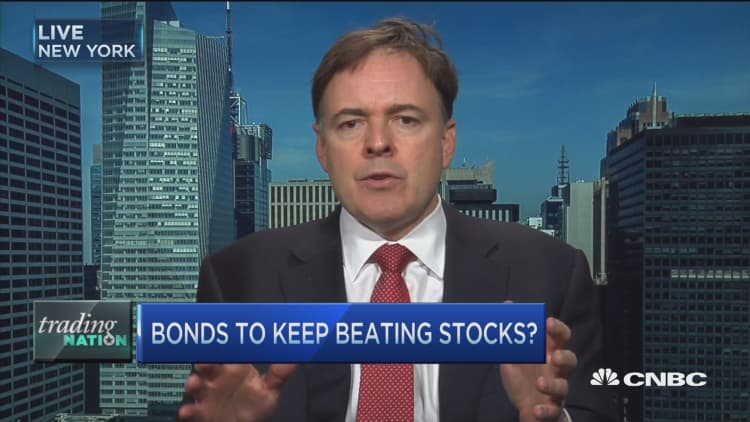
After a scary start to the year, stocks are managing to show mild gains for 2016. Yet investors would have done much better this year by simply buying bonds.
The long term Treasury bond exchange traded fund (TLT) is up 9 percent through Friday's close, while Vanguard's long term corporate bond ETF (VCLT) has risen in price by 7 percent. The latter's performance is even more impressive when one factors in its 4.4 percent annual yield. (The TLT's 2.6 percent yield, meanwhile, is just slightly above that of the S&P-tracking SPY.)
These bond products are the beneficiaries of declining American yields. Falling rates around the world, global growth concerns, and a perception that the Federal Reserve will raise benchmark rates slower than previously expected have conspired to send yields lower for Treasuries and corporate debt alike (consequently sending prices higher).
When assessing the battle between stocks and bonds, Larry McDonald of ACG Analytics quipped to CNBC that "if it was a fight, they'd stop it."
Looking forward, the prevalence of global government bonds yielding so still much less than Treasuries means that yields are set to go lower still, so Treasurys remain a "buy," McDonald said this week on CNBC's "Power Lunch."
Yet the low yields are a great reason for investors to skip the bond market altogether and buy equities, says Eddy Elfenbein, editor of the "Crossing Wall Street" blog.
"The math strongly favors stocks," Elfenbein said recently. One receives "1.7, 1.8 [percent] on the 10-year [Treasury note], and just look at the dividend yield on the S&P 500 — it's about 0.3 percent more than that."
"On top of that, dividends grow, while fixed income is just that — fixed," Elfenbein added.
This isn't the first year fixed income look set to beat equities, however. Corporate bonds have managed to beat stocks in 14 of the last 19 years, Elfenbein points out.
If current trends continue, they're about to go 15 for 20.






